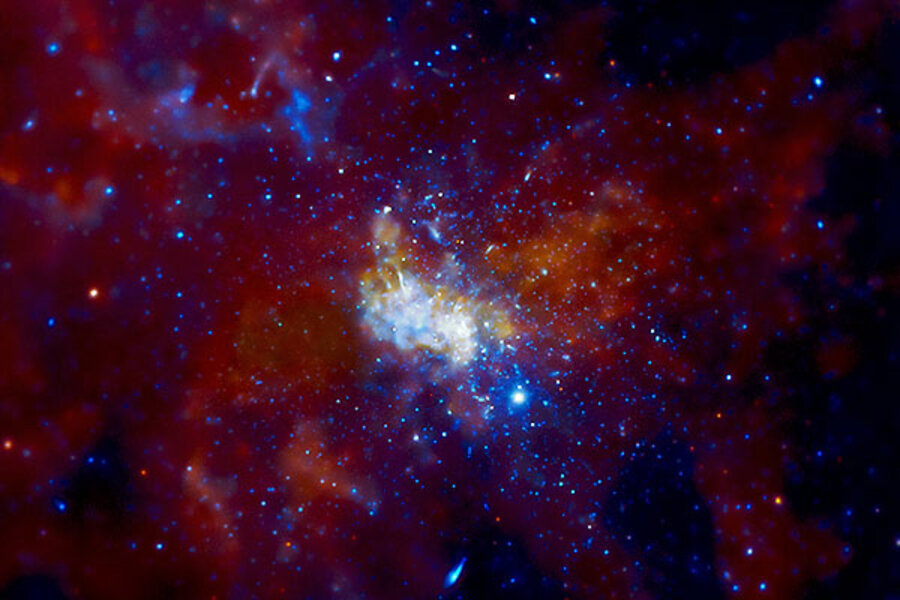Scientists chart dark matter halo that binds Milky Way
Loading...
The huge halo of dark matter that surrounds the Milky Way appears to be shaped like a squashed beach ball, a team of astronomers have discovered.
Dark matter is a mysterious form of matter in the cosmos that emits no light. Instead, its tell-tale signature is the effect its gravity has on galaxies, such as the Milky Way.
Astronomers used that feature of dark matter to produce the first 3D estimate of the shape of the dark-matter halo that surrounds the Milky Way and whose gravity holds our home galaxy together.
That shape resembles a squashed beach ball, says David Law, an astronomer at the University of California at Los Angeles who led the team. He shared his team's results Wednesday during a briefing at the American Astronomical Society's winter session in Washington, D.C.
The result bolsters the idea that most of the matter in the universe is the so-called cold dark matter, one of two broad types of dark matter. No one yet knows what this matter is made of, but it is considered cold because its purported particles exist at low energies and they don't interact in ordinary matter in ways that yield light. Researchers say the cold-dark-matter theory predicts that individual galaxies will be encased in a halo of dark matter with, in effect, a squashed beach-ball shape.
The findings could also help yield insights into dark matter's role in galaxy formation and evolution. Dark matter clumps have increasingly come to be seen as the shepherds of the early universe, gathering within their gravitational grasp the ordinary matter – molecules of hydrogen and helium – that would eventually form stars, then individual galaxies. Dark matter has been found to act as the scaffolding along which vast clusters and super clusters of galaxies formed and are distributed.
Clues to shape
Dr. Law's team found hints that the Milky Way's dark-matter was shaped like a beach ball by studying the drawn-out disintegration of a dwarf galaxy known as the Sagittarius dwarf spheroid, a satellite galaxy orbiting the Milky Way some 50,000 light years from the Milky Way's center.
In essence, the Milky Way is tearing the smaller galaxy apart as the dwarf galaxy spirals inward toward an eventual galaxy-on-galaxy collision. As it does so, the bigger galaxy's gravitational tug is pulling stars away from the dwarf galaxy in long streamers. By studying the motions of these streamer stars, the team was able to infer the shape of the Milky Way's dark-matter halo.
The results were gratifying, but they also contained a surprise.
An off-kilter halo
Given the Milky Way's profile – a flat disk with a central bulge – one might expect the beach ball's flattening to follow the galaxy's profile. That would yield a ball flattened above and below the galaxy's disk and elongated along the plane of the disk.
Instead, the beach ball's distorted shape was about 90 degrees off-kilter, with the flattened portions perpendicular to the disk.
As researchers work to solve that puzzle, the results "will be very useful to help constrain future models, not only of the dark-matter particle itself, but how galaxies such as our own form," Dr. Law says.
----
Follow us on Twitter.





